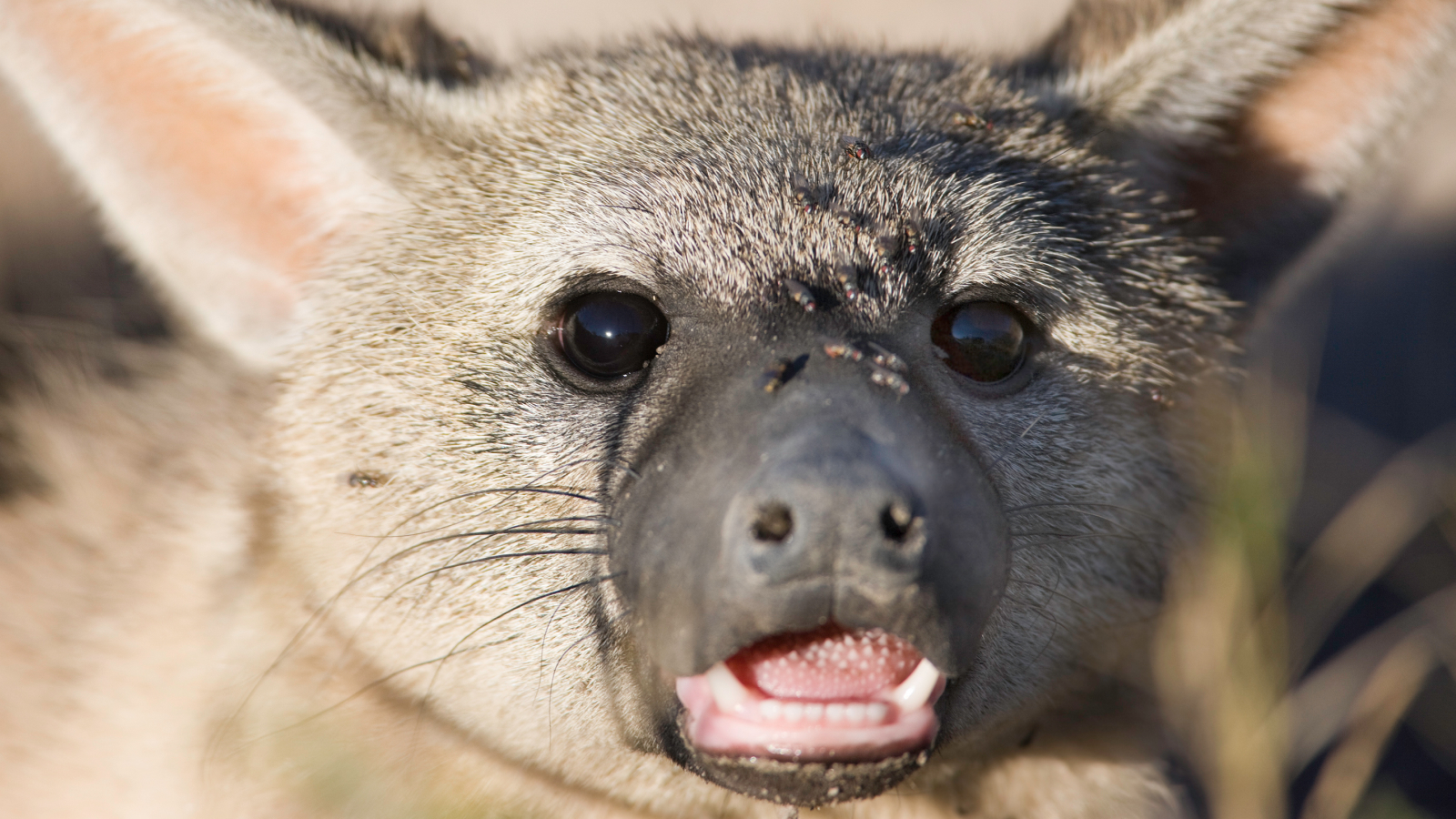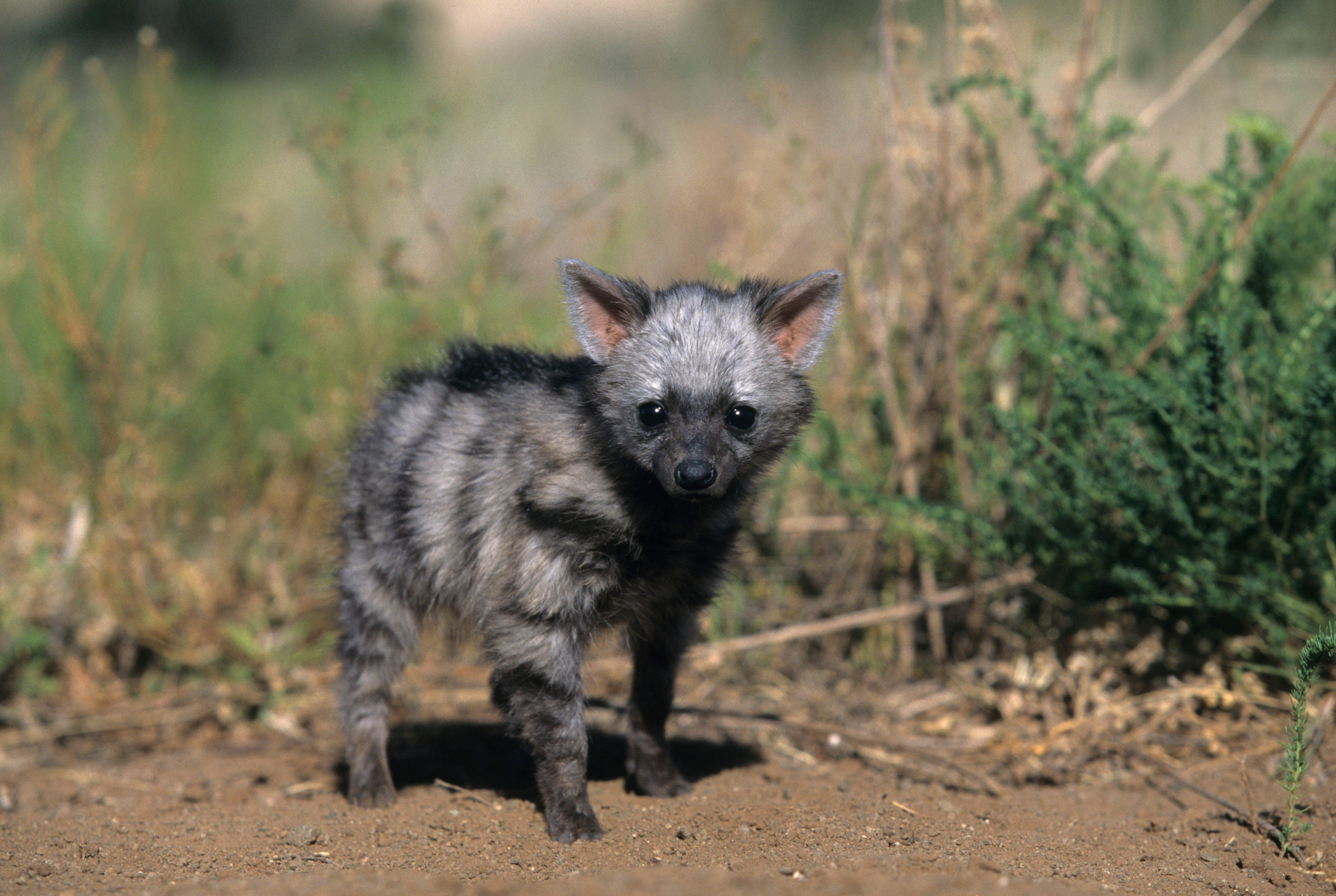
Name: Aardwolf (Proteles cristatus)
Where it lives: Savannah and grasslands in eastern and southern Africa
What it eats: Termites and ants
Why it's awesome: Unlike their meat-eating relatives, these solitary, nocturnal little hyenas survive on a diet almost entirely made up of termites. They can gobble up to 300,000 of the insects every night, using their sticky, super-long tongues to lap them up.
Aardwolf tongues are broad and rounded, with big, hardened papillae, or the bumps on the tongue that contain taste buds. The sand they lap up with the termites helps the hyenas' digestion.
Thanks to this specialized diet, aardwolves have flattened, peg-like teeth that can't chew meat. While the animals still have fangs, unlike their meat-eating counterparts, they only use them to defend their territory and cubs.
Related: Siberian cave filled with mammoth, rhino and bear bones is ancient hyena lair
Aardwolves, which translates as "earth wolves" in Afrikaans, are the smallest of the four hyena species, measuring 22 to 31 inches (55 to 80 centimeters) long and up to 20 inches (50 cm) tall. Unlike spotted hyenas (Crocuta crocuta) and striped hyenas (Hyaena hyaena), aardwolves don't live in packs and only come together to mate and rear young.
This lonely lifestyle also stems from their taste for termites. They spend many hours licking up termites each night, and this foraging-based diet isn't suited for group living.

Scientists aren't sure how aardwolves first evolved. The species' complete departure from its living relatives and extinct ancestors means it's a "ghost lineage," according to a 2022 statement from Berkeley News. The species is believed to have emerged about 15 million years ago, based on genetic divergence from other hyena species, but the earliest fossils resembling the species date to just 4 million years ago.
However, fossils unearthed in China dating back 12 to 15 million years ago revealed an extinct species of hyena — Gansuyaena megalotis — that had also developed a termite-eating diet. While not a direct ancestor of aardwolves, the discovery helps to fill the gaps in our understanding of how these unusual hyenas came to be.
"With these fossils, we can really start to get at the question, 'how does an otherwise very specialized lineage for eating meat have a member, a weird cousin, that started down this totally different path of becoming a specialized insectivore, a termite specialist?'" study co-author Jack Tseng, assistant professor of integrative biology at the University of California, said in the statement.
"Now, we have the starting point and ending point, which is today. The next step is to figure out what happened in the intervening 10 million years of this lineage."







